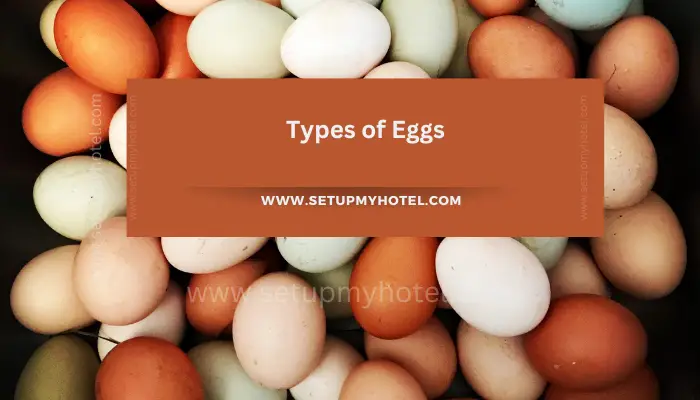Types of eggs
Eggs are a staple in many households and come in different varieties. The most commonly consumed eggs are chicken eggs, which are available in different sizes and colors. Brown eggs are often believed to be healthier than white eggs, but this is a misconception. The color of the eggshell is determined by the breed of chicken and has no effect on the nutritional value of the egg.
Aside from chicken eggs, other types of eggs are also available. Duck eggs have a larger yolk and a thicker shell, which makes them ideal for baking. QuailVery small game bird; now mainly reared on farms. eggs are much smaller than chicken eggs and have a distinct flavor that is often described as buttery. They are commonly used in Asian cuisine and are a great addition to salads or served as a snack.
For those who have dietary restrictions, there are also alternative types of eggs available. VeganVegan - A strict vegetarian who eats no animal products. eggs are made from plant-based ingredients and are a great alternative for those who are allergic to eggs or follow a vegan diet. These eggs can be used in cooking and baking just like regular eggs. A recipe called for egg normally means chicken egg unless otherwise specified.
Different Types of Eggs available for purchase:
- Standard White Eggs – These eggs come from white hens that are typically raised in conventional housing systems. Conventional housing has been the standard for decades, but the Alberta egg industry has begun to transition away from conventional housing systems.
- Standard Brown Eggs – These eggs come from brown hens that are typically raised in conventional housing systems. Conventional housing has been the standard for decades, but the Alberta egg industry has begun to transition away from conventional housing systems.
- Furnished / Enriched / Nest-Laid Eggs – These eggs come from hens that are raised in furnished housing systems. Furnished housing provides more space (both floor space and height) for the hens to move around, while also providing a variety of enrichment, which allows the hens to express more natural behaviors. Enrichments include nesting boxes, perches, scratch pads, and dust baths.
- Free-Run Eggs – These eggs come from hens that are raised in free-run (barn or aviary) housing systems. Free-run systems allow the hens to roam freely within an enclosed barn, while also providing a variety of enrichments such as nesting boxes and perches
- Free-Range Eggs – These eggs come from hens that are raised in free-run (barn or aviary) housing systems, which also provide access to outdoor runs (when weather permits).
- OrganicOrganic refers to agricultural products that are grown using cultural; biological and mechanical met... Eggs – These eggs come from hens that are raised in free-range housing systems. The hens are only provided feed that has been certified organic, which means that it only contains ingredients that were grown without pesticides, herbicides, or commercial fertilizer. Look for a certified organic symbol on the egg carton.
- Omega-3 Eggs – These eggs come from hens that were provided feed containing extra flax (up to 10-20%). As a result, the eggs laid by these hens contain more Omega-3 fatty acids.
- Vitamin-Enhanced Eggs – These eggs come from hens that were provided feed that was nutritionally enhanced to include higher levels of certain vitamins (ie: VitaminVitamin - Any of a variety of groups of compounds present in foods in small quantities which are nec... D or Vitamin E). As a result, the eggs laid by these hens contain corresponding higher amounts of the particular vitamin(s).
- VegetarianVegetarian is a�person whose diet includes only plant products and animal byproducts; such as eggs... Eggs – These eggs come from hens that were provided feed containing only plant-based ingredients.
- Processed Eggs – Liquid, frozen, and dried egg products come from eggs that were broken by special egg-breaking machines and then pasteurized. They often contain added ingredients (ie: preservatives, flavoring, or coloring) and this process allows for special formulations (ie: egg whites only).
- Conventional cage eggs – These eggs come from hens that live in climate-controlled barns in cages of about 6-7 per cage. Each hen has about 60 to 80 square inches of space.
- Cage-free eggs – These eggs come from hens that have more room to roam, about 140 square feet per hen — generally in some kind of room or open area. They are still somewhat contained.
- Free-range eggs – These hens are usually outdoors (or have some indoor-outdoor access). They have more of an opportunity to forage freely versus eating from automated feed and water lines.
- Nutritionally enriched eggs – Organic eggs come from hens that eat natural feed, and they’re usually cage-free or free-range. Naturally-enriched eggs come from hens that are given extra omega-3s in their diet.
- Ready-use eggs – Eggs that are peeled and packaged, liquid eggs, and powdered eggs are all examples of processed egg products.
- Lower-cholesterol eggs – Geneticists have tried to develop a strain of egg layers that would produce lower-cholesterol eggs, but their efforts at genetic manipulation have proven unsuccessful. Chickens, like humans, need cholesterol for their normal development.
- Eggs higher in vitamin E – By feeding hens on diets high in vitamin E, egg producers can produce eggs that contain significantly more vitamin E than ordinary eggs. Given its benefits, including its role as an antioxidant, some consumers may be interested in foods containing higher levels of vitamin E.
- Frozen Eggs – Includes whole egg, whites, yolks, whole egg with extra yolk, etc. It should be pasteurized before freezing. It is used for scrambled eggs, omelets, French toast, and in baking.
- Dried eggs – Should be pasteurized before drying. Includes whole egg whites & yolks. Moisture is removed through evaporation. They are primarily used for baking.
In cooking the term 'EGG' refers to the oval ovum of a bird, used as food. There are many types of eggs, such as Hen, Turkey, Guinea fowls, Ducks, and Geese. However, we are most concerned with the egg of domesticated fowl called chicken. No matter what type of egg you choose, they are a great source of protein and essential nutrients. Incorporating eggs into your diet can provide numerous health benefits and add variety to your meals.











